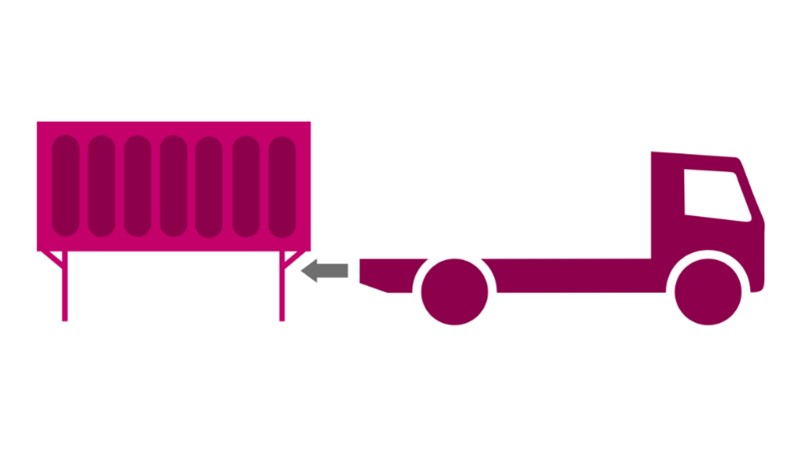Swap Body
What is a swap body?
A swap body is an interchangeable load carrier that can by separated from its carrier vehicle. Swap bodies are used especially for goods transport by road and rail. They are also called swap containers, exchangeable bodies, swap platforms, swap boxes or swap-body bridges.
Properties
At first glance, a swap body looks like a normal truck. However, in contrast to a normal truck, a swap body can be separated from the carrier vehicle. For unloading, the swap body stands on its folding supports and is separated from the tractor. That way, a different truck can simply approach the container and connect to it. Swap bodies are especially well suited for use in combined transports, since they make the transshipment of cargo time-saving and efficient.

In contrast to ISO containers, swap bodies are standardised to the base size of euro pallets. They can be structured very differently and thus have many uses. Possible designs are box bodies or bodies with tarpaulin, roller doors, wing doors or special bodies. For rail transshipments, swap bodies are equipped with special grip edges.
Container classes
Swap bodies can be categorised into different container classes. Most swap bodies are C containers with a total weight of 16 tonnes and a length of up to 7.82 metres. C containers have foldable support legs, which means that a truck can drive under the container and “pick it up”. C containers are usually not stackable, but there are also stackable models. The support legs are available in different heights.
A containers, on the other hand, have a total weight of up to 34 tonnes and are up to 13.67 metres long. They do not have any support legs and are made for transport with a tractor chassis.
Information worth knowing about swap bodies
Swap bodies already came into existence in the early 1950s. Both in the US and in Germany, transport containers were needed that could be used intermodally to reduce the time required for the transshipment of goods. In 1971, the modern swap body with foldable support legs was developed by the forwarding company Dachser.